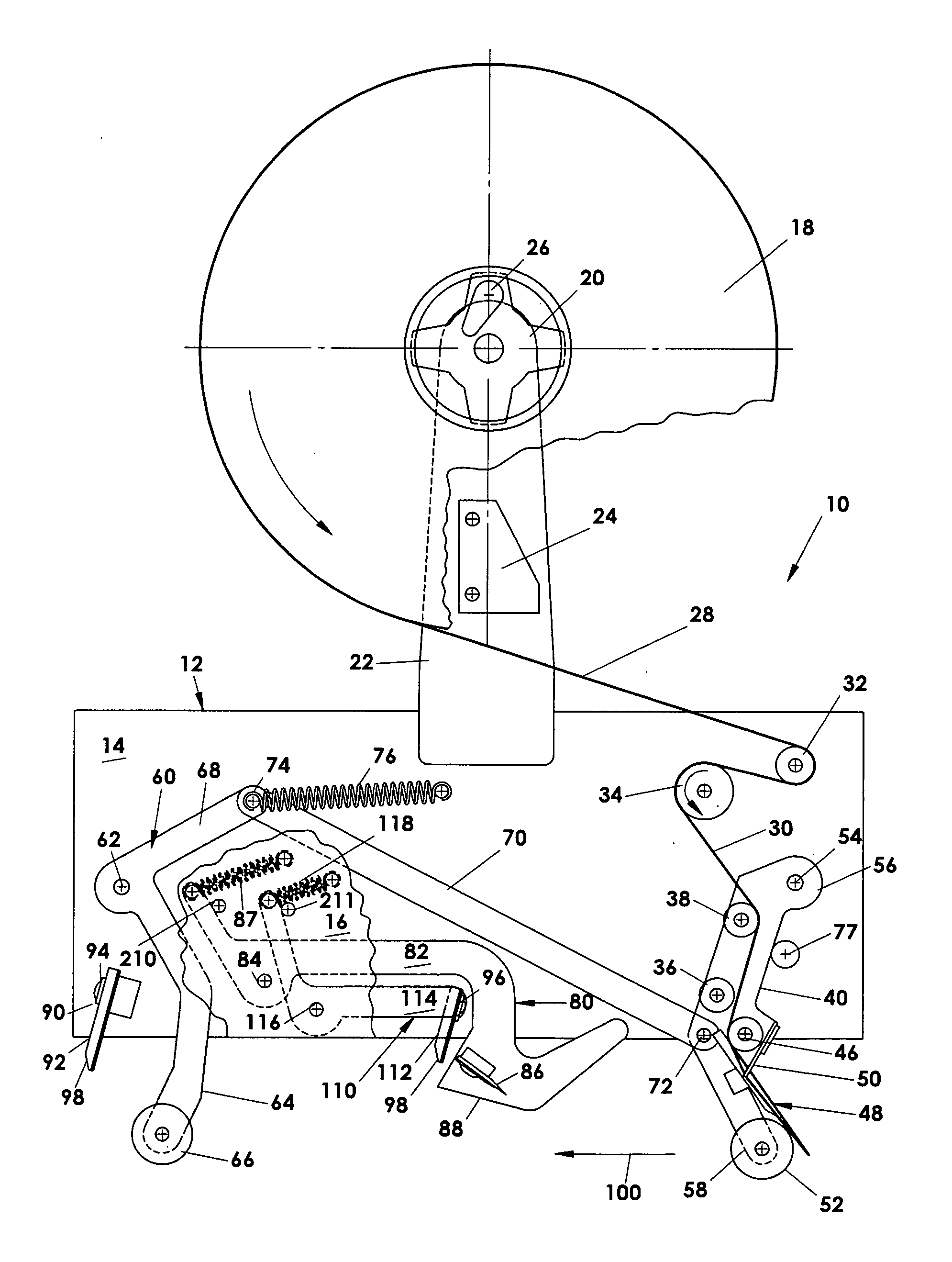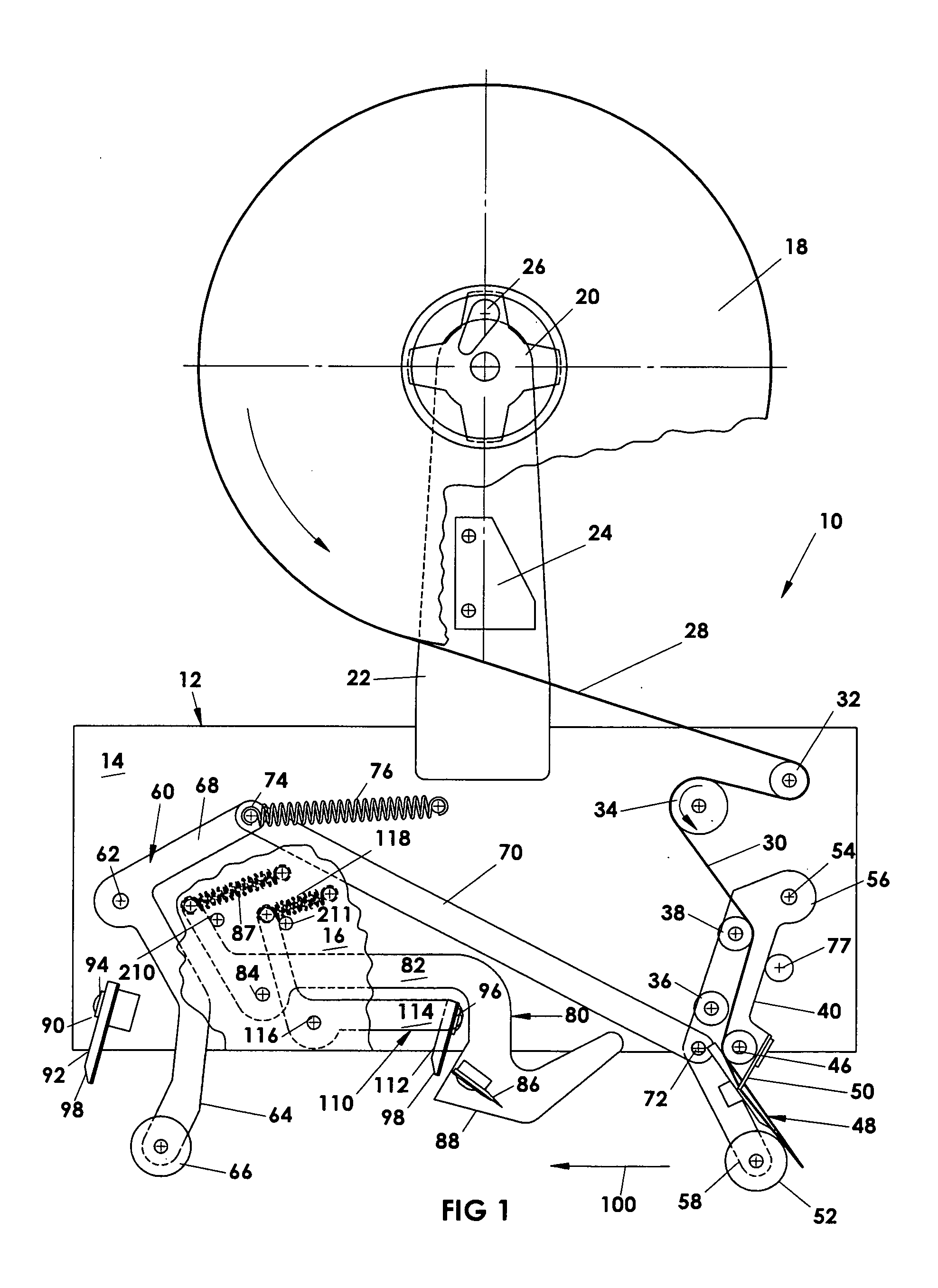Common problems in carton taping include loosely wrinkled tape left on the taped carton;
flagging at the rear corner; tape not making sufficient surface contact to adhere to the carton particularly in soft, under-packed or un-even surfaces carton conditions.
When the resisting tape tension increased or a light
spring force setting is being used for soft carton, the tape will pull the front and the rear rollers away from the surface of the carton, reducing the application pressure or completely losing surface contact between the tape and the carton, with insufficient tape adhesion to the carton during the application process, the tape
cut off with a sudden release of tension causing the tape to snap back with wrinkled, misaligned or crumpled tape placement on the carton which is being
brush down by a
brush further down the end of the tape applicator.
This wiper mounted on the front applicator arm aggravated the above-mentioned problem because the tape generated more friction around the end of the wiper that in many cases dragged the wiper away from the taping surface.
When a serrated blade is used the teeth of the serrated blade penetrate through the thickness of the tape, resulting in the tip of the teeth
puncturing the tape at contact and wedging the tape to the bottom of the teeth, as a result, any
adhesive or loose debris of tape from the
cutting may wedged in between the bottom of the teeth, consolidated and slowly build up.
As a result it is common practice to provide an oil pad attached to the blade cover to lubricate the
cutting blade to minimize the amount of build-up, however, it still requires periodically cleaning.
Otherwise it will affect the tape cutting causing production down-time.
Another problem with conventional tape applicators is related to holding and guiding the end of the tape in position for application to the leading end of a case or carton being taped.
This is not reliable especially when taping the bottom of a case or carton, the tape often falls off the application roller and misses the carton.
Many mechanical devises are being used to retain the leading portion of the tape to prevent the falling of the tape as well as forming the tape from both side or in the middle of the tape in order to make the tape more rigid and thereby hold its position relative to the surface of the application roller, those devises are complicated which makes tape threading difficult, most importantly, they are not effective when a short tab length application is required i.e. a short tab has a leading end of the tape that is not long enough to reach the surface of the application roller.
U.S. Pat. No. 5,725,721 provides an example of a device that can hold and
expose the short leading end of the tape however, it does not provide a full surface support at the back of the tape to sufficiently presses the tape onto the carton surface and the tape will just smear the surface of the carton without adhesion so that the entire taping process is in effective.
In most cases, lacking full backing support of the short leading end of the tape causes the tape partially adhered onto the vertical surface of the carton, the corner of the carton may help to pull and advance the tape from up-
stream to complete the taping process however, the taped carton is defective with insufficient adhesion of the front tab having the flaps loosely taped around the shoulder of the carton.
This method is not very effective as the changes in tape tension can create problems in tape adhesion and tape cutting.
Moving the one way
clutch roller complicates the mounting of this roller and generally increases the time required to change between short and long
front panel tabs.
Most importantly, adjusting the one way
clutch roller can only affect a small amount of tape length adjustment.
All these locking devise are not sufficient to secure the tape roll.
As the tape roll reduces towards the end, less tape wound around the paper core which starts to loosened and deformed, consequently the
leaf spring or knurled surface roller lose their gripping effect and the tape roll slides off the hub.
 Login to View More
Login to View More 


